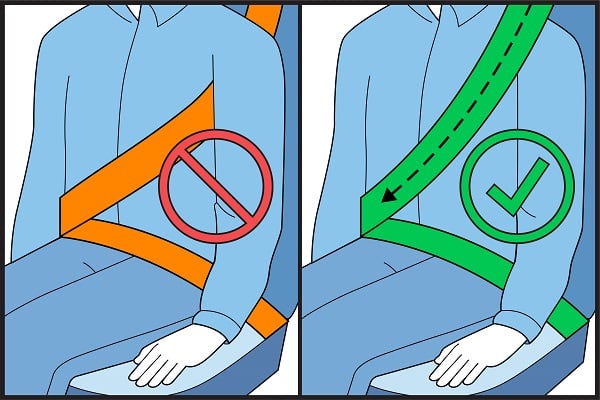Seat belts & child restraints
A summary of the key road rules for wearing seat belts and child restraints.
Everyone travelling in a motor vehicle must be wearing a child restraint, booster seat or seat belt that is properly adjusted and fastened.
The type of restraint to use depends on the person’s age and size:
Drivers are responsible for making sure that:
- all passengers are wearing seat belts or child restraints correctly
- there is only one person in each seating position and seat belt.
Penalties
The penalties if passengers are caught unrestrained or improperly restrained in a vehicle include:
- fines and demerit points for the driver, and
- fines for passengers aged 16 years and over.
The rules in detail
The key road rules and reference numbers for seatbelt wearing and child restraints are:
- 264 - Wearing of seat belts by drivers
- 265 - Wearing of seat belts by passengers 16 years old, or older
- 266 - Wearing of seat belts by passengers under 16 years old
- 267 - Exemptions from wearing seat belts.
Where can children sit in vehicles?
Show more
Children under the age of 4 years must only travel in the back seat of a vehicle.
Children aged 4 years old to under 7 years old can only sit in the front seat if all of the back seats are taken by other passengers under 7 years old. The child must travel in a booster seat without a top tether strap, because there will be no anchorage points for the front seat.
Children aged 7 years and over can travel in the front seat. However, research shows that children under 12 years are much safer travelling in the back seat.
Should children use restraints in taxis?
Show more
When travelling in taxis:
- taxi drivers are exempt from making sure all passengers over 16 are restrained
- children aged under 1 year must travel in the back seat, but do not have to use a child restraint
- children aged 1 year and over must be in their own seat, with their own properly fastened seat belt if there is no child restraint or booster seat available.
In Victoria, taxis do not have to provide child restraints or booster seats for customers. However, they must have at least one anchorage point if passengers want to bring their own child restraint.
If possible it is recommended that you take your child’s restraint or booster seat with you.
Should children use restraints in buses?
Show more
Different rules for using child restraints or booster seats apply depending on the size of the bus.
If the bus has more than 12 seats (including the driver’s seat), children are not required to use child restraints or booster seats. Where possible, use child restraints and booster seats in buses. Otherwise, children must use the seat belts provided.
If the bus or vehicle has 12 or fewer seats (including the driver’s seat), then all children under the age of 7 must use an appropriate child restraint or booster seat.
How to wear a seat belt
Show more
Seatbelts, when worn correctly, are proven to significantly reduce the risk of injury or death in a crash.
The seatbelt will not work properly in a crash and could cause injury if it’s worn incorrectly. The top part of the seatbelt should be on the shoulder and the bottom part on the hips.
The seatbelt should fit as firmly as possible with no twists or knots.

Mobile phone and seat belt cameras have been introduced in Victoria. Read more about the penalties and the new cameras here.
New distracted driver road rules
From 31 March 2023 changes to road rules apply regarding the use of portable, wearable, inbuilt, and mounted devices while driving a vehicle or riding a motorbike. Penalties apply for the use of these devices and for seatbelt related offences that are now detectable by cameras. You can download a summary of changes here Distracted Driver Road Rules 2023 [PDF 409 Kb] or learn more using the link below.